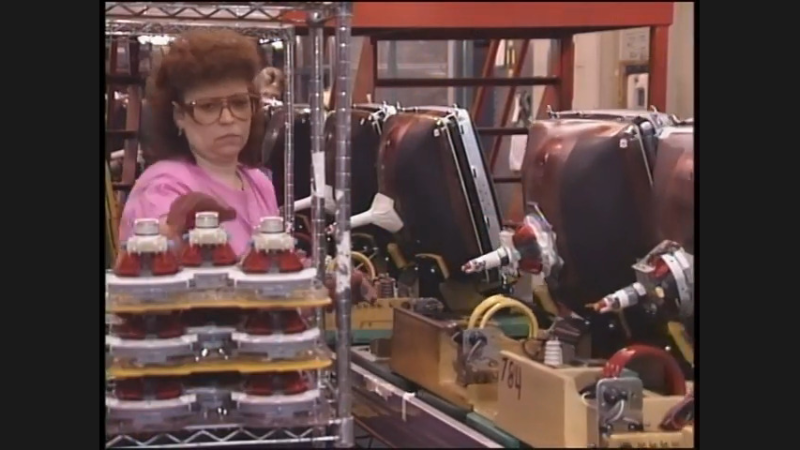
Those of us who worked in TV repair shops, back when there was such a thing, will likely remember the cardinal rule of TV repair: Never touch the yoke if you can help it. The complex arrangement of copper wire coils and ferrite beads wrapped around a plastic cone attached to the neck of the CRT was critical to picture quality, and it took very little effort to completely screw things up. Fixing it would be a time-consuming and frustrating battle with the cams, screws, and spacers that kept the coils in the right orientation, both between themselves and relative to the picture tube. It was best to leave it the way the factory set it and to look elsewhere for solutions to picture problems.
But how exactly did the factory set up a deflection yoke? We had no idea at the time, only learning just recently about the wonders of automated deflection yoke yamming. The video below was made by Thomson Consumer Electronics, once a major supplier of CRTs to the television and computer monitor industry, and appears directed to its customers as a way of showing off their automated processes. They never really define yamming, but from the context of the video, it seems to be an industry term for the initial alignment of a deflection yoke during manufacturing. The manual process would require a skilled technician to manipulate the yoke while watching a series of test patterns on the CRT, slowly tweaking the coils to bring everything into perfect alignment.
Automating this process would have been a huge competitive advantage for a company like Thomson. Being able to provide correctly aligned CRT assemblies to a manufacturer would have been a productivity booster, especially since Thomson claimed to be able to adjust the process to the customer’s assembly line needs. They also say that the automated yamming process took just 30 seconds per tube thanks to a series of sensors and cameras watching the screen. The human element wasn’t completely eliminated, though; at the 3:50 mark, some unlucky QA tech is shown watching an endless carousel of tubes flashing a few test patterns to confirm the process. And you think your job sucks.
It’s not exactly clear when this video was made. The title suggests it was 1995, and that seems about right from the technology in the video, which includes a computer running a version of Windows from around that timeframe. Ironically, the LCD monitor on that touchscreen display was a harbinger of things to come for Thomson, which was out of the CRT business in the US less than a decade later.
This articles is written by : Nermeen Nabil Khear Abdelmalak
All rights reserved to : USAGOLDMIES . www.usagoldmines.com
You can Enjoy surfing our website categories and read more content in many fields you may like .
Why USAGoldMines ?
USAGoldMines is a comprehensive website offering the latest in financial, crypto, and technical news. With specialized sections for each category, it provides readers with up-to-date market insights, investment trends, and technological advancements, making it a valuable resource for investors and enthusiasts in the fast-paced financial world.
